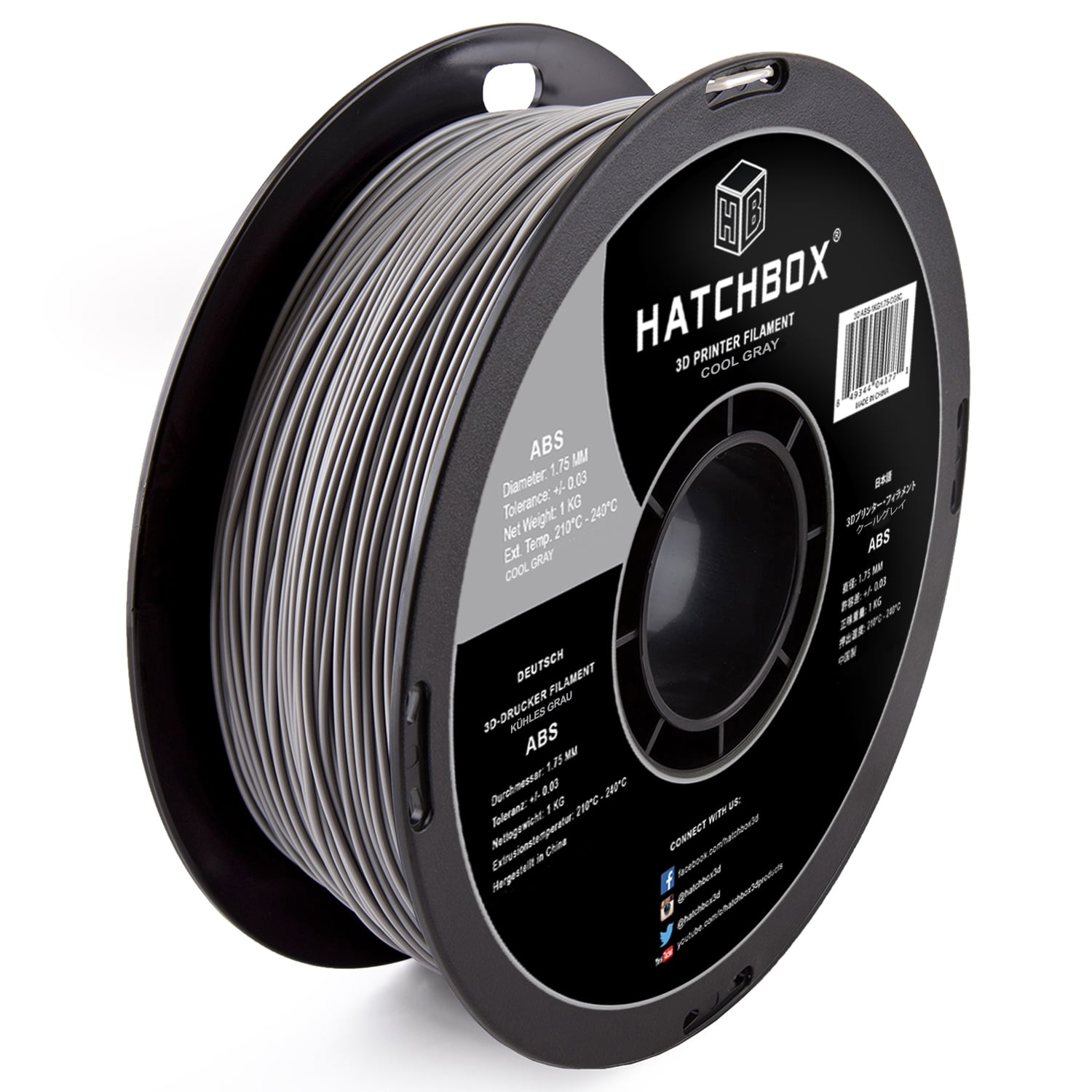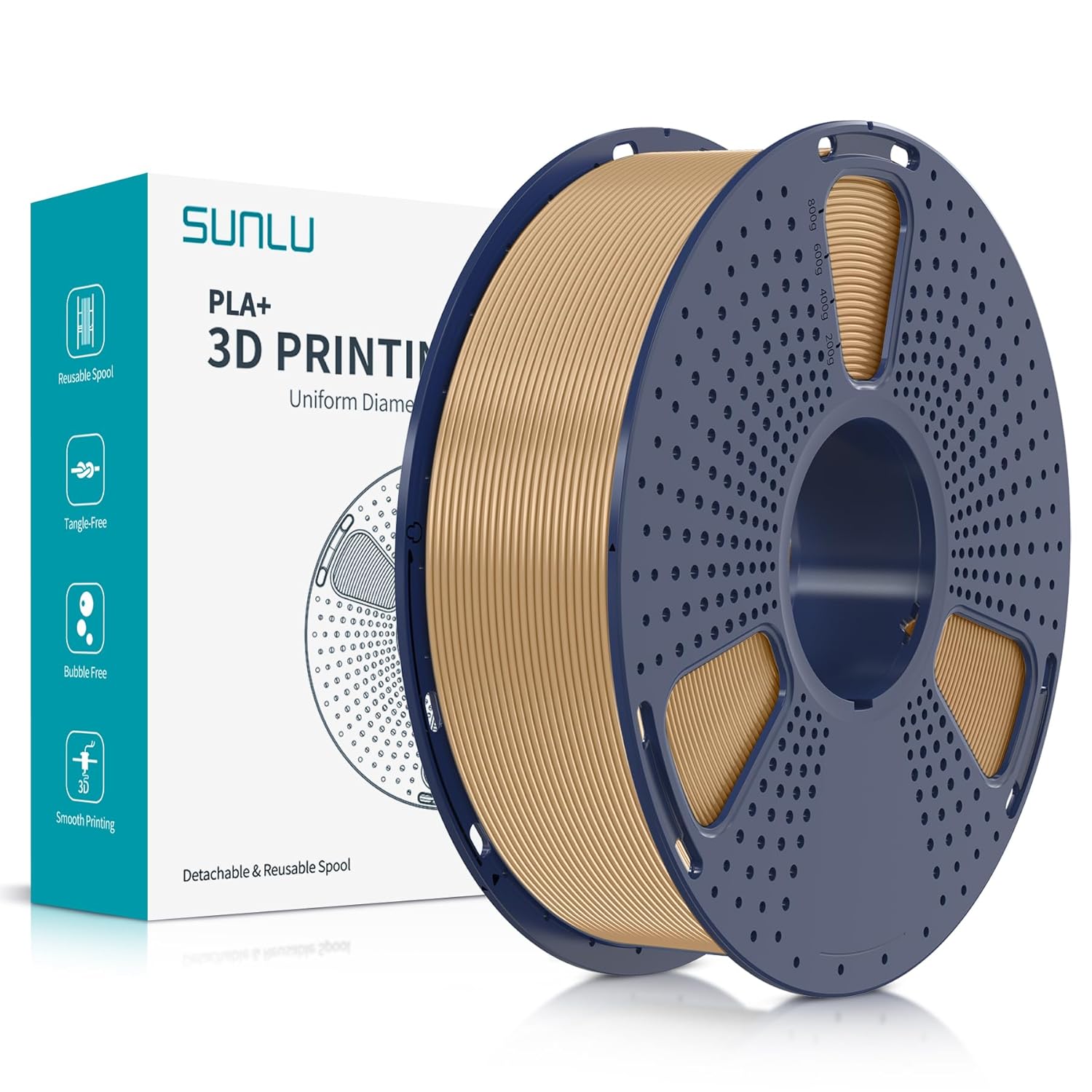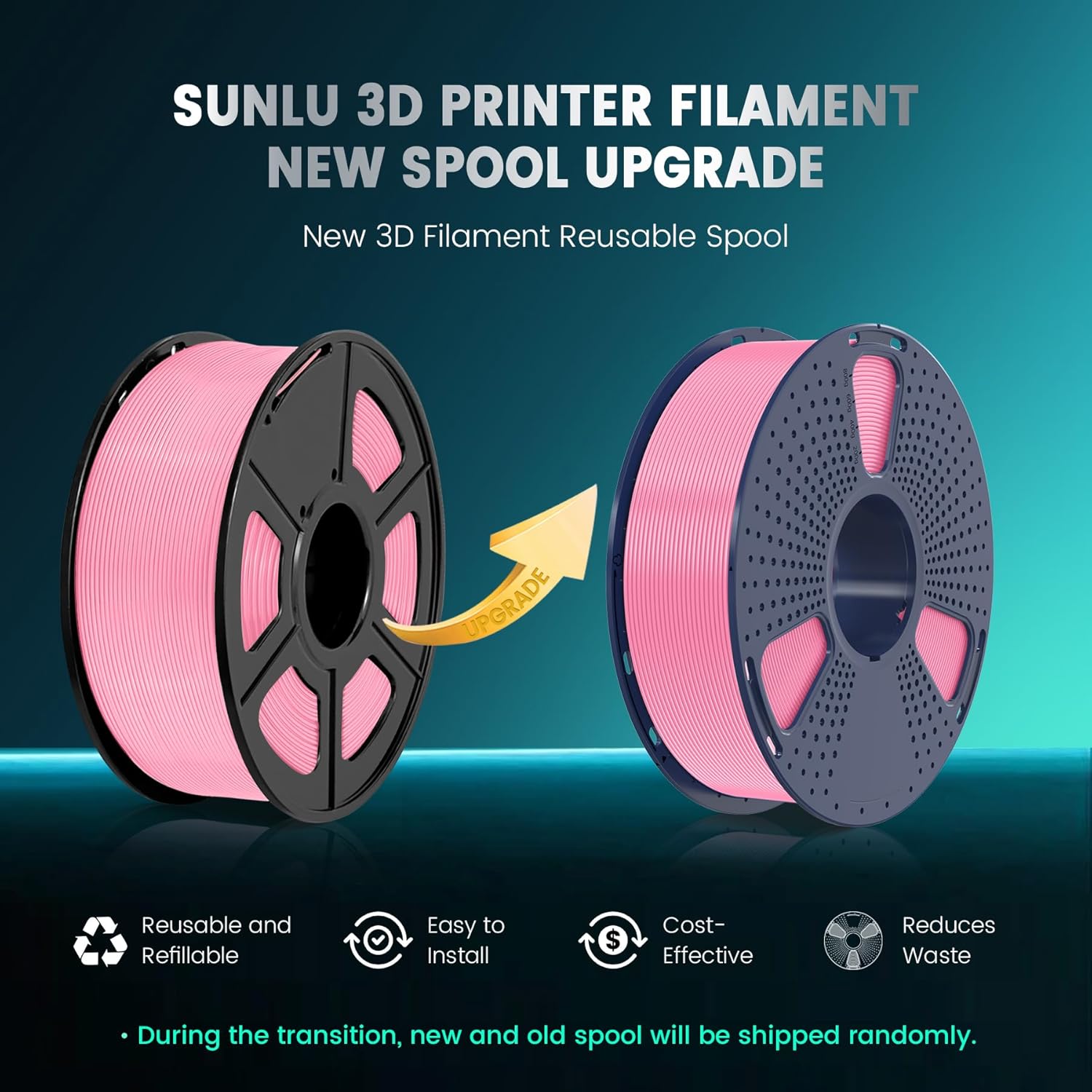











| Price $ | Brand | Type | Filament |
|---|---|---|---|
| 8.99 | Lotactree | TPU | TPU 250g (0.55lb) Black 95A Flexible Rubber-Like High Elasticity ±0.03mm Tangle-Free FDM Printers |
| 18.68 | Geeetech | TPU | 95A TPU Soft Flexible Consumables ±0.03mm,1kg (2.2lbs) Black |
| 18.68 | Geeetech | TPU | 95A TPU Soft Flexible Consumables ±0.03mm,1kg (2.2lbs) Blue |
| 19.99 | CoLiDo | TPU | Flexible TPU Shore 95A 500G Diameter Ideal Durable Elastic Prints(White,1-Pack) |
| 19.99 | Sepdance | TPU | TPU Flexible 95A Soft High Speed/High Flow Rate ±0.02mm 1kg (2.2lbs) Orange. |
| 21.99 | Anycubic | TPU | TPU 95A Soft Flexible ±0.02mm Print with Most FDM 3D Printers 1KG Grey |
| 21.99 | Giantarm | TPU | TPU Flexible Soft Consumables Blue,95A 1kg (2.2lbs.) ±0.05mm |
| 21.99 | Giantarm | TPU | TPU Flexible Soft 3D Printer Consumables Black,95A 1kg (2.2 lbs.) ±0.05 mm |
| 21.99 | Justmaker | TPU | TPU 95A Suitable Resilience Upgrade 1kg ±0.05mm White |
| 21.99 | TEQStone | TPU | TPU Blue 1Kg 95A Flexible Soft Consistent Diameter ±0.03mm in age |
| 21.99 | TEQStone | TPU | TPU Black 1Kg 95A Flexible Soft Consistent Diameter ±0.03mm in age |
| 22.99 | Priline | TPU | TPU,98A Flexible Soft 1kg Black |
| 24.69 | Yousu | TPU | TPU 95A Flexible Soft Clear/Transparent,1kg (2.2 lbs) |
| 24.99 | Elegoo | TPU | TPU White 1kg 95A Flexible Soft ±0.02mm Cardboad (2.2lbs) |
| 25.99 | Geeetech | TPU | TPU Flexible Roll Shore 95A,1kg ±0.03mm (Clear) |
| 25.99 | Giantarm | TPU | TPU 95A ±0.03 Flexible Soft 1kg (2.2lbs) (Clear) |
| 25.99 | Giantarm | TPU | TPU Flexible Soft Consumables Purple,95A 1kg (2.2lbs.) ±0.05mm |
| 25.99 | Ranki | TPU | TPU 95A Flexible ±0.05mm 1kg (Fluorescent Orange) |
| 25.99 | Ranki | TPU | TPU 95A Flexible ±0.05mm 1kg (Cyan) |
| 26.00 | Yoyi Yoyi | TPU | YOYI 95A TPU Flexible 0.8KG ±0.03 mm Soft s of High Elasticity (Blue) |
| 26.99 | Amolen | TPU | 95A TPU High Hardness Resilience Transparent Green 1kg Flexible 3D ±0.02mm Suitable |
| 26.99 | Amolen | TPU | TPU Transparent Multicolor Rainbow Color Change Flexible Soft Supports High Speed 1kg (2.2lbs) Blue Green Orange |
| 26.99 | Amolen | TPU | TPU Flexible Soft Supports High Speed 1kg (2.2lbs) Paper White |
| 26.99 | Sepdance | TPU | TPU Flexible 95A Soft High Speed/High Flow Rate ±0.02mm 1kg (2.2lbs) Blue. |
| 27.99 | Overture | TPU | TPU Flexible Roll 95A Soft 1kg (2.2lbs) ±0.02mm (Black) |
| 27.99 | Overture | TPU | TPU Flexible Roll 95A Soft 1kg (2.2lbs) ±0.02mm (White) |
| 27.99 | Overture | TPU | TPU Flexible Roll 95A Soft 1kg (2.2lbs) ±0.02mm (Digital Blue) |
| 27.99 | Priline | TPU | TPU High Flow/High Speed Printing 95A Flexible Soft 1kg Support Fast Digital Blue |
| 28.99 | Overture | TPU | TPU Flexible Roll 95A Soft 1kg (2.2lbs) ±0.02mm (Green) |
| 28.99 | Overture | TPU | TPU Flexible Roll 95A Soft 1kg (2.2lbs) ±0.02mm (Gray) |
| 28.99 | Overture | TPU | TPU Flexible Roll 95A Soft 1kg (2.2 lbs) ±0.02mm ( Yellow) |
| 29.00 | Sunlu | TPU | TPU High Speed 95A Bundle Flexible 3D Fast Printing 250G 8 Rolls 2kg in Total Black+White+Grey+Red+Transparent+Blue+Green+Orange |
| 29.99 | Amolen | TPU | 95A TPU Glow in The Dark Red Soft Flexible High Hardness Resilience Best with UV Lamps 1kg (2.2lbs) Fits |
| 29.99 | Amolen | TPU | 95A TPU Glow in The Dark Yellow Soft Flexible Best with UV Lamps 1kg ±0.02mm Fits |
| 29.99 | Amolen | TPU | 95A TPU Glow in The Dark Blue Soft Flexible Best with UV Lamps 1kg ±0.02mm Fits |
| 29.99 | Amolen | TPU | 95A TPU Glow in The Dark Orange Soft Flexible Best with UV Lamps 1kg ±0.02mm Fits |
| 29.99 | Creality | TPU | Flexible TPU 1kg ±0.03mm 95A Shore Hardness Good Layer Bonding Performance |
| 29.99 | Ormeli | TPU | Storage Rack Wall Mount Foldable Heavy Duty Metal Shelving with Adjustable Hole Spacing TPU/ABS/Nylon 3D Printer Accessories Studios Garages Workshops |
| 30.99 | Overture | TPU | TPU High Speed Flexible 95A Roll ±0.02mm (HS Grass Green) |
| 30.99 | Overture | TPU | TPU High Speed Flexible 95A Roll ±0.02mm (HS Pink) |
| 30.99 | Overture | TPU | TPU High Speed Flexible 95A Roll ±0.02mm (HS Transparent) |
| 31.99 | Siraya Tech | TPU | Flex TPU 85A Shore ISO 10993 High Flexibility Toughness Flow Speed Moisture-Resistant Aluminum Bag Ideal Footwear Protective Gear (White 1kg) |
| 31.99 | Sunlu | TPU | TPU High Speed 95A 1kg Flexible 3D Fast Printing ±0.03mm Suitable . (Pink) |
| 32.29 | Amazon Basics | TPU | TPU Red 1kg (2.2lbs) |
| 32.99 | Tinmorry | TPU | TPU Bundle TINMORRY Combipack 200g x 5 s Black+White+Transparent red+Transparent Blue+Transparent Green |
| 33.59 | Siraya Tech | TPU | Flex TPU 85A Shore ISO 10993 High Flexibility Toughness Flow Speed Moisture-Resistant Aluminum Bag Ideal Footwear Protective Gear (Black 1kg) |
| 45.00 | Spider Maker | TPU | SpiderMaker SpiderFlex Matte Finish Flexible TPE ( TPU) Shore 75A 500g (Fair Skin) |